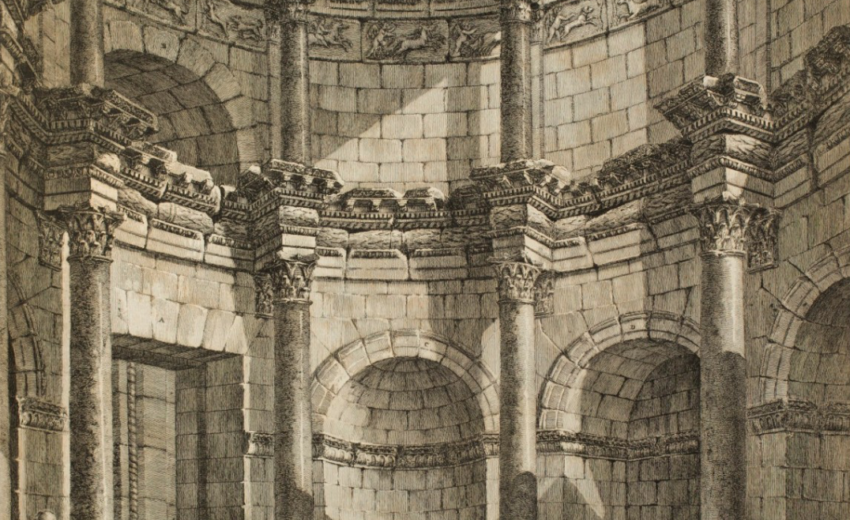
Adam, Ruins of the Palace of the Emperor Diocletian at Spalatro in Dalmatia
The work describes the villa – or rather, fortress-palace – which the Emperor Diocletian built at Split (the ancient Aspalathos) on his abdication in 305 A.D. The plates are a mixture of plans, sections and elevations and views. To Robert Adam, newly arrived in Italy in 1755, Clérisseau was the one who ‘rais’d my ideas, he created emulation and fire’. In this spirit of emulation Adam contemplated revising Desgodetz’s Les édifices antiques or Burlington’s Fabbriche antiche, following the meticulous format of Wood’s The Ruins of Palmyra (1753); but by 1757 he and Clérisseau were exploring the unsurveyed palace of Diocletian at Split. The resulting publication has plates based on drawings by Clerisseau and an introduction by William Robertson; but the architectural commentary and the reconstructions are those of Adam. A principle of Adam’s reconstruction (not confirmed by later excavations) is that of axial symmetry.
Download
Adam_Ruins of the Palace of the Emperor Diocletian at Spalatro in Dalmatia.pdf
Adam_Ruins of the Palace of the Emperor Diocletian at Spalatro in Dalmatia.txt
Adam_Ruins of the Palace of the Emperor Diocletian at Spalatro in Dalmatia.html
Adam_Ruins of the Palace of the Emperor Diocletian at Spalatro in Dalmatia.jpg
Adam_Ruins of the Palace of the Emperor Diocletian at Spalatro in Dalmatia.zip



